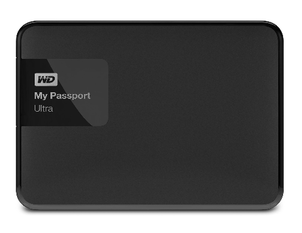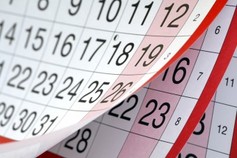This is one in a series of posts that describe what I use and how I use it for genealogy. These are all personal observations and recommendations based on my experiences over the years. It is my hope that these will help others become better researchers and give them the tools to do this efficiently and easily and to enjoy the process!
I don't know anybody who has not learned this lesson the hard way. Despite our best intentions, we don't back up our files as often or in the manner we should. In the past, most programs were designed to run a backup, but it required human effort to do it and take the backup offsite. Anybody remember backing up to tapes? When I worked at Joseph-Beth Booksellers, we backed up to tape and then took the tape to a secure location offsite. Since it was the candy store in the same shopping center, that served as encouragement to make the trip there!
Thank goodness that backing up our files is much, much easier these days. While getting things in place and finding a schedule that works for you takes a little bit of time, it is well worth the effort.
First, I have an external hard drive connected to my desktop. This is where I do the majority of my work and ultimately store all genealogy-related software, documents, and images. I purchased a new WD (Western Digital) My Passport Ultra for $59 from amazon.com (it's the same price at Walmart) and LOVE it! It is sooo tiny and easy to use, especially compared to the older WD My Book external drive I now use on a different computer.
Thank goodness that backing up our files is much, much easier these days. While getting things in place and finding a schedule that works for you takes a little bit of time, it is well worth the effort.
First, I have an external hard drive connected to my desktop. This is where I do the majority of my work and ultimately store all genealogy-related software, documents, and images. I purchased a new WD (Western Digital) My Passport Ultra for $59 from amazon.com (it's the same price at Walmart) and LOVE it! It is sooo tiny and easy to use, especially compared to the older WD My Book external drive I now use on a different computer.
Since my schedule dictates that I am away from my computer each evening at 7:30 p.m., I have my daily backup scheduled for then. It doesn't seem to matter if I happen to still be working, but I like to use that scheduled backup time as a deadline to wrap things up here. It seems to be a good motivator for me.
In addition to the external hard drive, I use the IDrive backup service. Thomas MacEntee posts *Daily Genealogy Bargains on his blog, Geneabloggers, and posted about a GREAT deal in November for 90% off IDrive, which made it only $5.95 for the first year! IDrive has other plans that allow you to select the size backup package that works for you and if you find you need more, you can always upgrade later. I went with 1TB and that seems to be a good fit for my family. Yes, I said family. IDrive lets you backup ALL of your computers and devices to the same plan!
*The Daily Genealogy Bargains is one great reason to sign up for Geneabloggers blog posts. Thomas MacEntee has posted a number of deals that made trying new products and services a bargain, including software, books, subscriptions to magazines and websites, etc. When you purchase by going through his links, he gets a portion of this and gives a percentage back to the genealogy community. Pretty cool to get a good deal, support a great genealogy dude, AND help others doing this thing we all love!
Oh, yeah, I almost forgot to mention, Thomas MacEntee is such a cool dude, he even occasionally has FREE books available on Kindle through amazon.com. Watch for these posts on his blog and Facebook (yes, you should like and follow him). I'll give more information on later posts when I discuss Facebook and Kindle.
Oh, yeah, I almost forgot to mention, Thomas MacEntee is such a cool dude, he even occasionally has FREE books available on Kindle through amazon.com. Watch for these posts on his blog and Facebook (yes, you should like and follow him). I'll give more information on later posts when I discuss Facebook and Kindle.
The one thing I did NOT know and was not forewarned about was the amount of time it would take for an initial full backup to IDrive (or any online backup service). We're talking days here! But when you think about it, upload speeds are MUCH slower than download speeds. So I tried to be patient, although at times I did give up and shut down the program for one reason or another (shutting down the computer when a storm was in the area was one time), and when I started the program and backup again, it picked up where it left off and continued. Now that the initial full backup is done, it just picks up any changes and is done in minutes.
I have IDrive scheduled daily, as well, but at a different time than my external hard drive backup.
I have IDrive scheduled daily, as well, but at a different time than my external hard drive backup.
WD My Passport Ultra on amazon.com and on walmart.com:
http://www.amazon.com/Black-Passport-Ultra-Portable-External/dp/B00W8XXRPM/ref=dp_ob_title_ce
http://www.walmart.com/ip/WD-My-Passport-Ultra-1TB-External-Hard-Drive-Assorted-Colors/44786025
But how do I plug everything in? I don't have enough USB ports!
http://www.amazon.com/gp/product/B00BWF5U0M?psc=1&redirect=true&ref_=oh_aui_detailpage_o00_s00
I love the on / off switches! *Make sure you right-click the thumb drive icon in the lower right tray and "eject" before turning off or unplugging to prevent any data loss.
And at the time I purchased it, it came with a free extension cable:
http://www.amazon.com/gp/product/B017XVQG38?psc=1&redirect=true&ref_=oh_aui_detailpage_o00_s00
Find out more about IDrive here:
https://www.idrive.com/
Learn how to use IDrive here:
https://www.idrive.com/videos
http://www.amazon.com/Black-Passport-Ultra-Portable-External/dp/B00W8XXRPM/ref=dp_ob_title_ce
http://www.walmart.com/ip/WD-My-Passport-Ultra-1TB-External-Hard-Drive-Assorted-Colors/44786025
But how do I plug everything in? I don't have enough USB ports!
http://www.amazon.com/gp/product/B00BWF5U0M?psc=1&redirect=true&ref_=oh_aui_detailpage_o00_s00
I love the on / off switches! *Make sure you right-click the thumb drive icon in the lower right tray and "eject" before turning off or unplugging to prevent any data loss.
And at the time I purchased it, it came with a free extension cable:
http://www.amazon.com/gp/product/B017XVQG38?psc=1&redirect=true&ref_=oh_aui_detailpage_o00_s00
Find out more about IDrive here:
https://www.idrive.com/
Learn how to use IDrive here:
https://www.idrive.com/videos
Just recently, I have seen where a few people are having problems with Evernote. While I have not, I would like to mention that backing up Evernote is recommended if you don't save your Notes to your hard drive.
You can find instructions to do that here:
https://help.evernote.com/hc/en-us/articles/208313528
You can find instructions to do that here:
https://help.evernote.com/hc/en-us/articles/208313528
My basic setup includes: HP computers and laptops, Windows 7 on all (have not upgraded to Windows 10 yet), HP Color Laser Printer, Brother Multi-Function Copier with Document Feeder, Epson Perfection V600 Photo Scanner.



 RSS Feed
RSS Feed